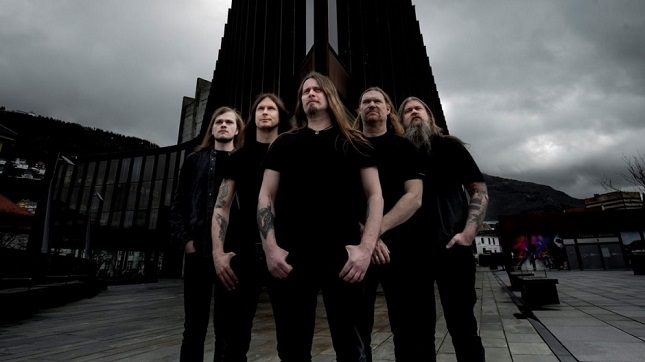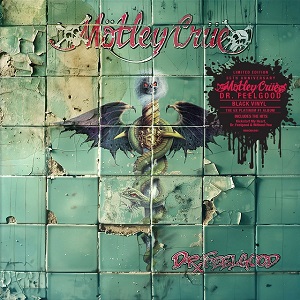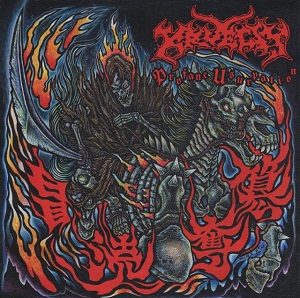ENSLAVED – Ahead Of Its Time
October 23, 2017, 7 years ago

Norwegian blackened Viking metal progenitors, Enslaved, have always done things its own way. Bassist/vocalist Grutle Kjellson and guitarist Ivar Bjørnson formed the band in 1991 when they were just 17 and 13 years old, respectively. The band’s Norse mythology set them apart from the burgeoning pack of Norwegian black metal bands who possessed a satanic image.
“We were probably the only band starting around 1990-91 that did not have a satanic black metal concept,” Kjellson said. “Not that we had anything against those bands, but the label “black metal” was not very suitable for a band like Enslaved. We had a clear definition of what black metal was in Norway back in the day, and since we didn’t have any satanic lyrics, we decided to call it Viking metal.”
Enslaved proved it was ahead of its time, and the band still remains that way to this day. The Norse mythology has always been a lyrical and conceptual platform, and on its 14th studio album, E, Enslaved’s diverse musical influences come to the forefront once again on its six expansive tracks. Kjellson explained the overall theme of E and the significance of the title and cover artwork.

“The “E” is the esoteric value of the rune reference to Ehwaz (which means horse), which is written like a Latin “M.”” Kjellson said. “It’s from the runic alphabet. For us, it symbolizes the duality between mankind and the outside world, and even the relationship between body and soul. Any kind of interaction and relationship you have with your surroundings. The cover art is similar in that way and the rune Ehwaz symbolizes the horse from Norse mythology. But it’s also a link to the symbol of duality and relations.”
With the arrival of new keyboardist Håkon Vinje, Enslaved’s dynamics has slightly changed, yet the change has rebooted the band’s energy level.
“He came quite late into the (writing) process,” Kjellson said. “Herbrand (Larsen) really quit in July of last year but he was with us for the rest of the year. We basically went on writing the album without a keyboard player. Except for Håkon’s keyboard lines that he wrote in the studio, we had everything ready. So he was kind of thrown into the whole process. Maybe a whole day (passed) before the recordings took place, we asked him to join the band. It was absolutely the best to be able to reboot, or that we had to reboot. I think it’s necessary to add some fresh blood.
Approaching the material on E, the band felt like experimenting a little more than normal and stepped outside of its comfort zone by implementing elements such as the usage of choir vocals and the saxophone, which appears on closer “Hiindsiight.”
“We kind of abandoned all ideas of having a normal structure,” Kjellson said. “This is the furthest away from a normal verse/chorus production we’ve ever done. The atmosphere was a lot better and the energy in the studio and the moods were totally different. It was easy to add additional effects like the saxophone and soprano flutes. It was additional layers in all directions and it just felt great and natural.”
Throughout E’s 50 minutes, there’s an abundance of mesmerizing melodies and hypnotic harmonies, especially on lead-off track “Storm Son.”
“The only plan we have is to not have any plans and just go for it,” Kjellson said. “We don’t like to construct anything to suit a certain type of audience. We like to be honest to ourselves and make things we find interesting ourselves; something we’d like to put on our own turntable. We do it because we are having a great time making our own favorite music. That has always been our main philosophy.”

In the early ’90s at the height of black metal in Norway, the media sensationalized the so-called “Black Metal Inner Circle,” especially focusing on the murders and church burnings that was happening at the time. Kjellson and Bjørnson frequently visited Mayhem guitarist Euronymous’ record shop Helvete, which was allegedly dubbed as the headquarters of “The Inner Circle.”
“It was a very small scene,” Kjellson admitted. “There weren’t many bands around and almost no gigs happened. It was a natural thing for me and Ivar to travel around the country because we were the only extreme metalheads around in the community where we lived. So to hang out and exchange ideas, talk about bands and have a couple of beers, we had to travel all the way to Oslo or Bergen to hang out with Immortal and the Old Funeral guys. Just going to the Helvete shop, get a couple six packs of beer and sit there and exchange ideas and listen to all kinds of music. A lot of great bands came out of those early days. It’s hard to imagine that people are mostly concerned about the criminal activity that happened a couple of years later, instead of the actual music being created at the same time.”
Kjellson and Bjørnson have remained the only constant in the band, and they’ve managed to push themselves creatively with each release. Motivation certainly isn’t a problem for Enslaved.
“The biggest motivation — in our opinion at least — is we’ve had some really good albums,” Kjellson said. “Live shows are my favorite, although I could do without the traveling. But when the energy is unleashed live, right there and then, I really don’t miss being a 9 to 5 worker. I am really happy with what we have achieved so far and I would do the same (thing) all over again.”











